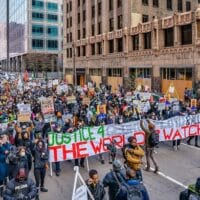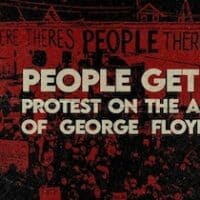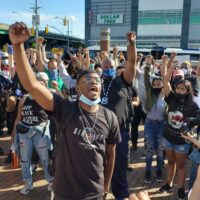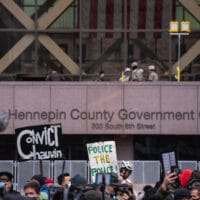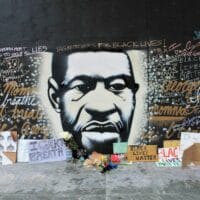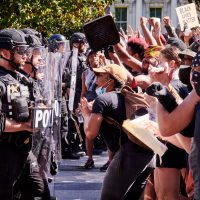-
Five years after the murder of George Floyd: The fight for Black liberation continues
It has been five years since police officer Derek Chauvin murdered George Floyd, an unarmed Black man, in the streets of Minneapolis on May 25, 2020.
-
People get ready: Protest on the anniversary of George Floyd’s murder
To defeat Trump’s agenda, we need a movement that unites all who can be united, and is ready to stand up and fight back. If the pardon rumors become reality, meet us in the streets.
-
America is demolishing antiracism five years after the George Floyd uprising
Hammer & Hope asked Black organizers, academics, and writers to consider the state of Black politics five years after the 2020 uprisings and with the re-election of Donald Trump. Their responses, some written before Trump’s inauguration, offer ideas for where we go from here.
-
Two years since George Floyd’s death, has anything changed in the U.S.?
The gains and setbacks in the movement for Black lives prove how racism is woven deeply into the fabric of capitalism and US society.
-
How ‘Justice for George Floyd!’ shook the ruling class to the core
On May 25, 2020, 44-year-old white Minneapolis police officer Derek Chauvin knelt on 46-year-old unarmed Black man George Floyd’s neck for nine minutes and 29 seconds, sadistically murdering him.
-
Report: U.S. police have killed 1068 people since Floyd’s death
U.S. police officers have killed at least 1068 people since the killing of African-American George Floyd by physical force by an officer a year ago, a report by a police watchdog group indicates.
-
The Chauvin verdict: A historic victory that points the way forward
For the very first time in United States history, therefore, a jury composed of people of whom half identify as white convicted a white cop for the second-degree murder of a Black person, the most serious charge to date. If there is an exception, it certainly is not as visible as this instance. Thus, a historic milestone—a victory to be celebrated, a victory, more importantly, that points the way forward.
-
The Revolutionary Meaning of the George Floyd Uprising
At least 28 people died in the wave of social unrest that rocked the United States from late May until late July in 2020. In this 10-week period, there were 574 riots; 624 arsons; 2,382 incidents of looting; 97 police vehicles set on fire; and 16,241 people arrested for protest-related activities.
-
George Floyd “narrated his death,” says attorney at International Inquiry
George Floyd, who was publicly tortured and lynched by Minneapolis police officers on May 25, 2020, narrated his own death, legendary civil rights lawyer Benjamin Crump told the International Commission of Inquiry on Systemic Racist Police Violence Against People of African Descent in the United States at its January 25 hearing.
-
Anatomy of a counter-insurgency
The defanging of the George Floyd Uprising was not accidental but was rather a deliberate attempt on the part of the American ruling class to regain social control in the wake of the largest and most militant protests in recent memory. This article examines the dimensions of how this defanging took place: how, within the space of two weeks, we went from burning down a police station to making small budgetary demands.

